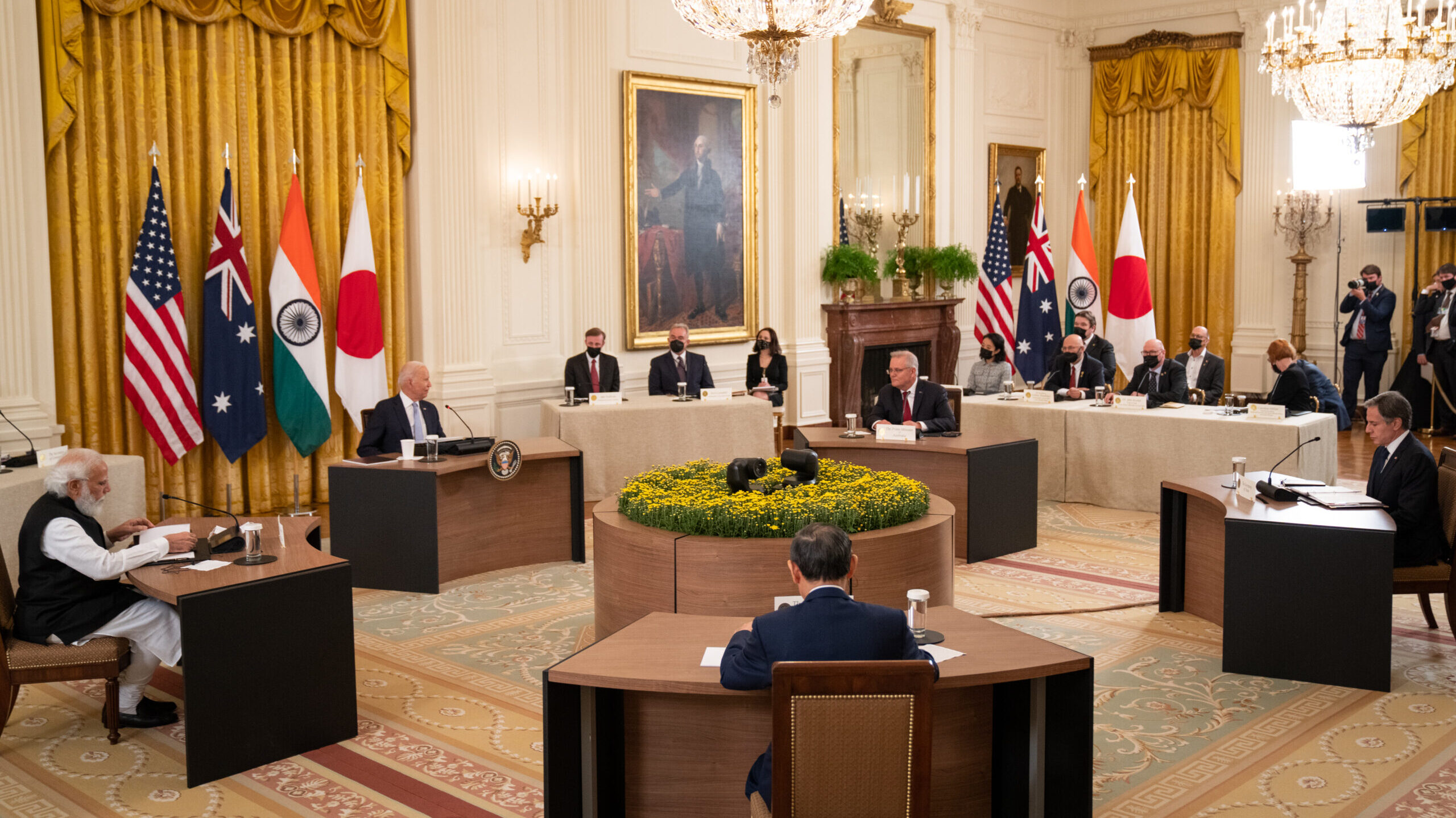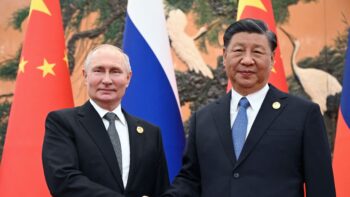
President Joe Biden hosts a Quad Leaders Summit in the East Room of the White House on September 24. (Photo by Sarahbeth Maney-Pool/Getty Images)
WASHINGTON: The first face-to-face meeting between the leaders of the so-called Quad — Australia, India, Japan and the United States — has spawned several initiatives designed to help moderate or crack the hold China has on certain technologies, including semiconductor chips and 5G networks. It also includes a new civil space initiative and an increased focus on cybersecurity.
The semiconductor effort by the Quadrilateral Security Dialogue (the formal name) is “a detailed joint initiative to map overall capacity” and to identify and fix supply chain vulnerabilities, a senior US administration official told reporters before today’s meetings.
The 5G effort is similarly designed help create “a diverse, resilient, secure telecommunications ecosystem,” and is obviously aimed squarely at rebuffing Huawei’s and ZTE’s 5G efforts.
The US has vigorously pressed allies and partners to resist Huawei and China’s efforts to make theirs the underlying technology for many national 5G networks.
A key part of the strategy is a push for “Open RAN development and adoption.” For those who may not know what the RAN is, Nokia provides this explanation:
“The RAN is the final link between the network and the phone. It is the visible piece and includes the antennae we see on towers, on top of buildings or in stadia, plus the base stations. When we make a call or connect to a remote server e.g. to watch a YouTube video, the antenna transmits and receives signals to and from our phones or other hand-held devices. The signal is then digitalized in the RAN base station and connected into the network.”
On the cybersecurity front, the senior administration official told reporters, “We have a robust cybersecurity effort underway with the State Department that’s going to be enhanced at the leader level.
“We’re going to try to take steps to bolster critical infrastructure resilience against cyber threats — something that’s plagued all four of our countries,” the official said. “And we are advancing a very high-level group on specific capabilities and technologies.”
The space initiative will lead to the countries sharing “information on illegal fishing, on issues associated with maritime domain awareness,” the senior official said, adding that it will also involve climate change monitoring and “promot[ing] a variety of issues associated with estuaries and fisheries — fishing more generally.”
Each of the Quad leaders was scheduled to hold a bilateral meeting with President Biden and with each other, and they are all to meet this afternoon. The Quad has three working groups: one on vaccine development, one on critical technologies and one on climate change.
At press time, no details had been released on the meetings beyond the now standard assertion that the Quad meeting, as Japanese Prime Minister Suga put it at a brief press pool appearance, “demonstrates strong solidarity between our four nations and an unwavering commitment to a free and open Indo-Pacific”.
One of the ironies of the Quad meeting is that, although its very formal name indicates security is central to its work, the administration officials who briefed the press kept saying national security issues were not a central focus of today’s meeting. However, every country had at least its version of the National Security Advisor at the meetings.
Meanwhile, in the day before the Quad meetings China did it best to demonstrate it does not necessarily share the goal of a free and open Indo-Pacific, launching waves of two dozen fighters and bombers inside Taiwain’s Air Defense Identification Zone (ADIZ).
19 PLA aircraft (J-16*12, Y-8 ASW*2, H-6*2, Y-8 EW and J-11*2) entered #Taiwan’s southwest ADIZ in the morning of September 23, 2021. Please check our official website for more information: https://t.co/c5EJJFhzKL pic.twitter.com/81fIdFbWFI
— 國防部 Ministry of National Defense, R.O.C. ???????? (@MoNDefense) September 23, 2021
The signal included 12 J-16 fighters, two J-11 jets, two H-6 bombers, two anti-submarine-warfare aircraft, and one electronic-warfare aircraft entered the ADIZ, according to Taiwan’s Ministry of Defense.
Those flights were followed by another three aircraft the morning of the meetings.
Australia tops up Ukraine military aid with $100M
Australia has already supplied Ukraine with 120 Bushmaster vehicles, six 155mm howitzers, 56 M113 armored vehicles, 14 special operations vehicles and its signature cardboard drones.



























